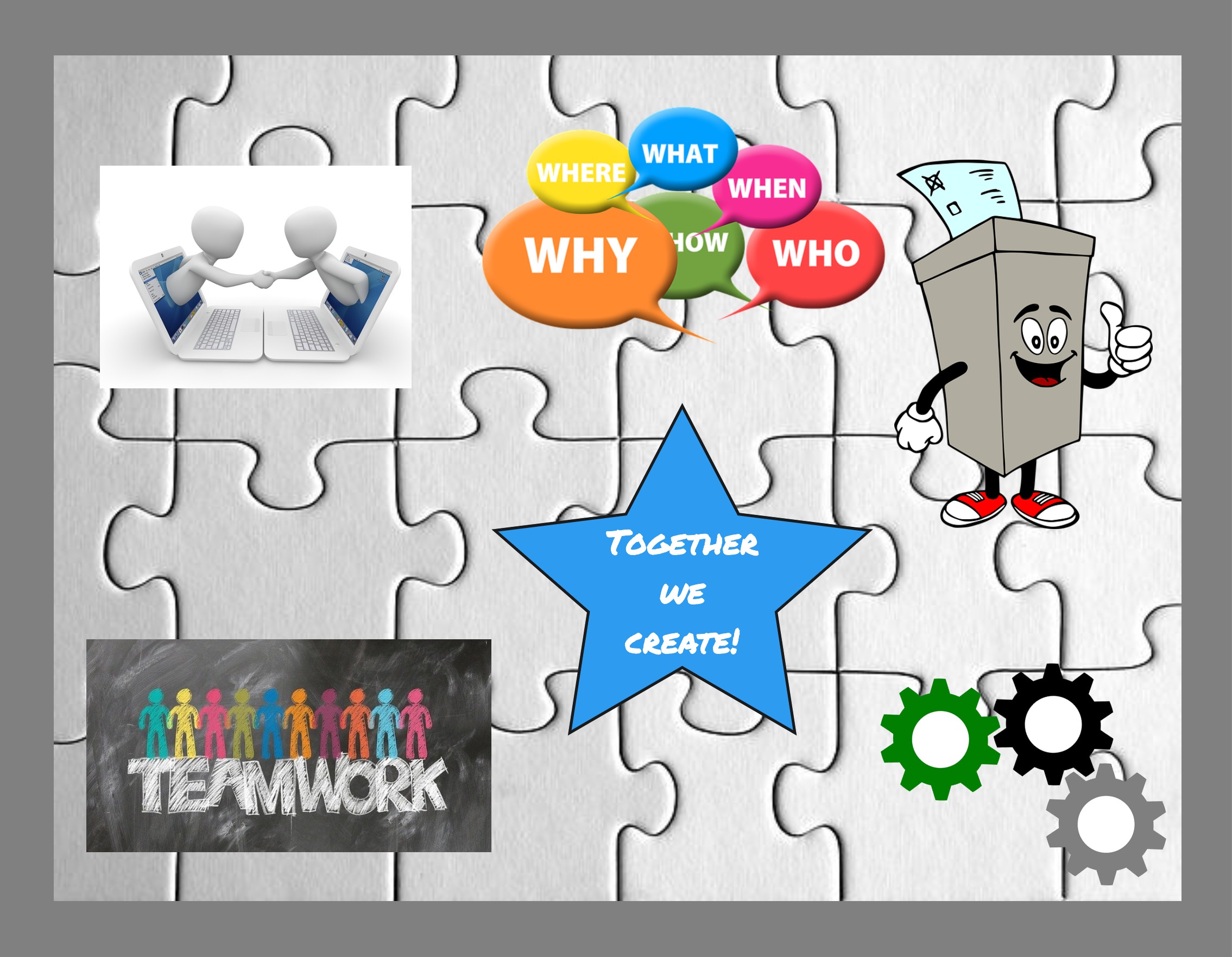
DAOs are at the Bleeding Edge of Organizational Innovation
There are many groundbreaking technologies being developed on blockchains and one that I have yet to experience first-hand are truly decentralized organizations. After many decades of both studying and working in centralized, vertical, autocratic organizations, you can imagine that decentralized, horizontal, democratic organizations peak my interests. So, I set off to learn more.
In a series of three installments, I am going to examine these decentralized autonomous organizations (DAOs).
Part One will kick-off the series with a look at:
- popular types of DAOs
- where to find data on existing organizations
- key components of a DAO
- member engagement.
Part Two will continue by diving into:
- the use of tokens
- tax responsibilities
- legal considerations.
Part Three will finish with a look at some of the popular applications and tools used to build and launch a DAO in Ethereum and other ecosystems, including DAO DAO from the Cosmos.
Having just completed my fourth decade in traditional corporations, ranging from the super large to the ultra tiny, I am extremely curious to compare these experiences to what I think is the bleeding edge of organizational innovation.
Why Form a DAO?
Decentralized Autonomous Organizations (DAO) are formed for all sorts of reasons; however, they are often formed to create and organize a:
- decentralized company
- non-profit, charity, or fundraising/crowd-funding organization
- for-profit investment club or fund
- membership based organization or club
- contributor team within a larger organization
- consortium of artists or creators
- community
- trade guild.
I left a link to a video from DAOhaus in the Sources section. This video perfectly describes why forming a DAO can be such a worthwhile endeavor.
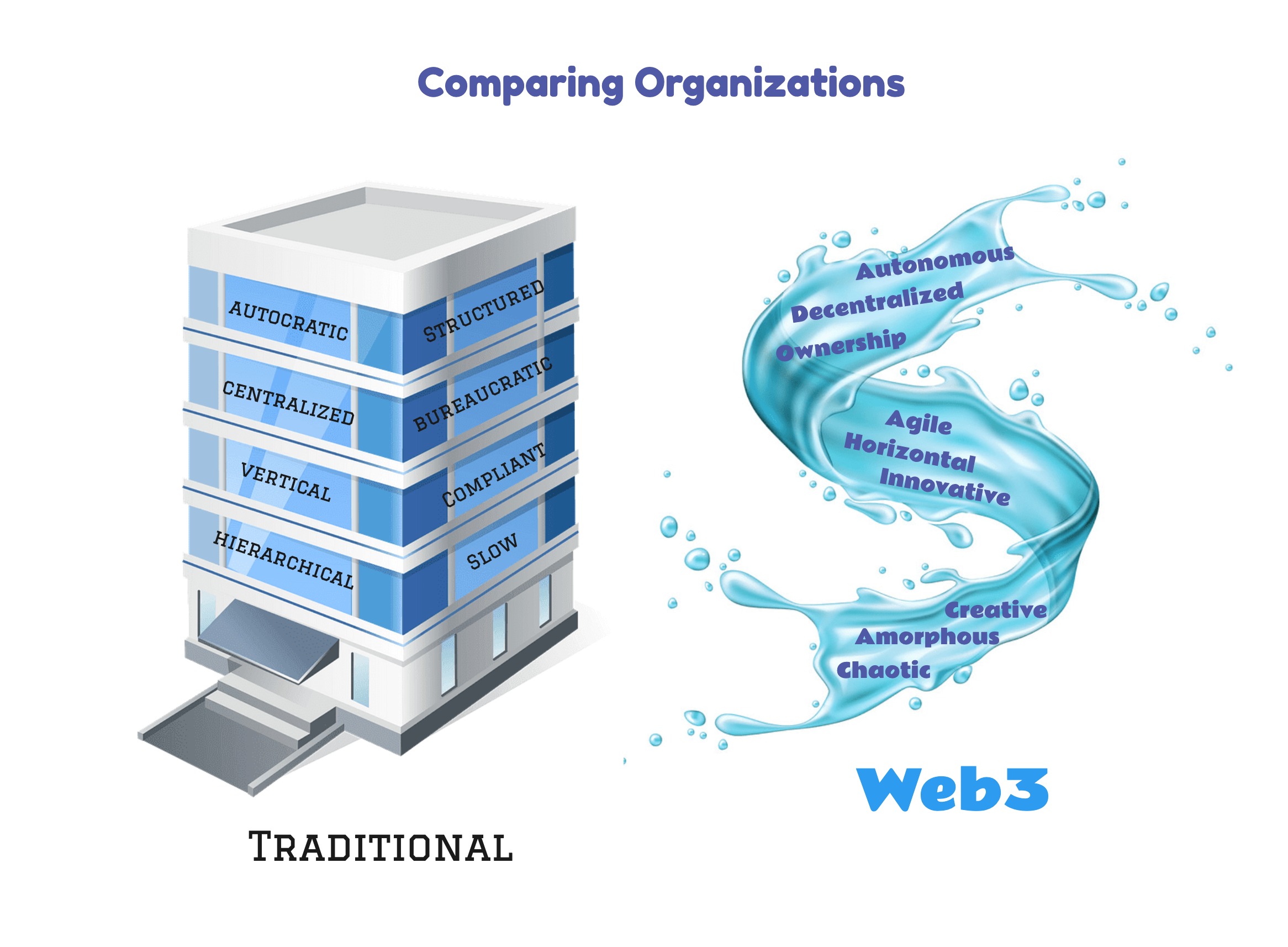
The DAO Landscape
A lot can be learned by studying what existing DAOs are doing, how they are organized, and their value. Deep DAO provides a wealth of information about existing DAOs, including quantitative data on the membership, treasury tokens, treasury value, and governance proposals. Additional details are available for each DAO listed on the site as well as a comprehensive listing of tools for DAOs.
Boardroom is a governance aggregator. You can easily track active proposals across all the DAOs you participate in from one dashboard. In addition, you can receive notifications of proposal activity directly to your email inbox.
DAOhaus is another excellent source for information and links to existing DAOs. They are also building a marketplace for DAOs to highlight and sell their services.
The links to these sites are in the Sources section.
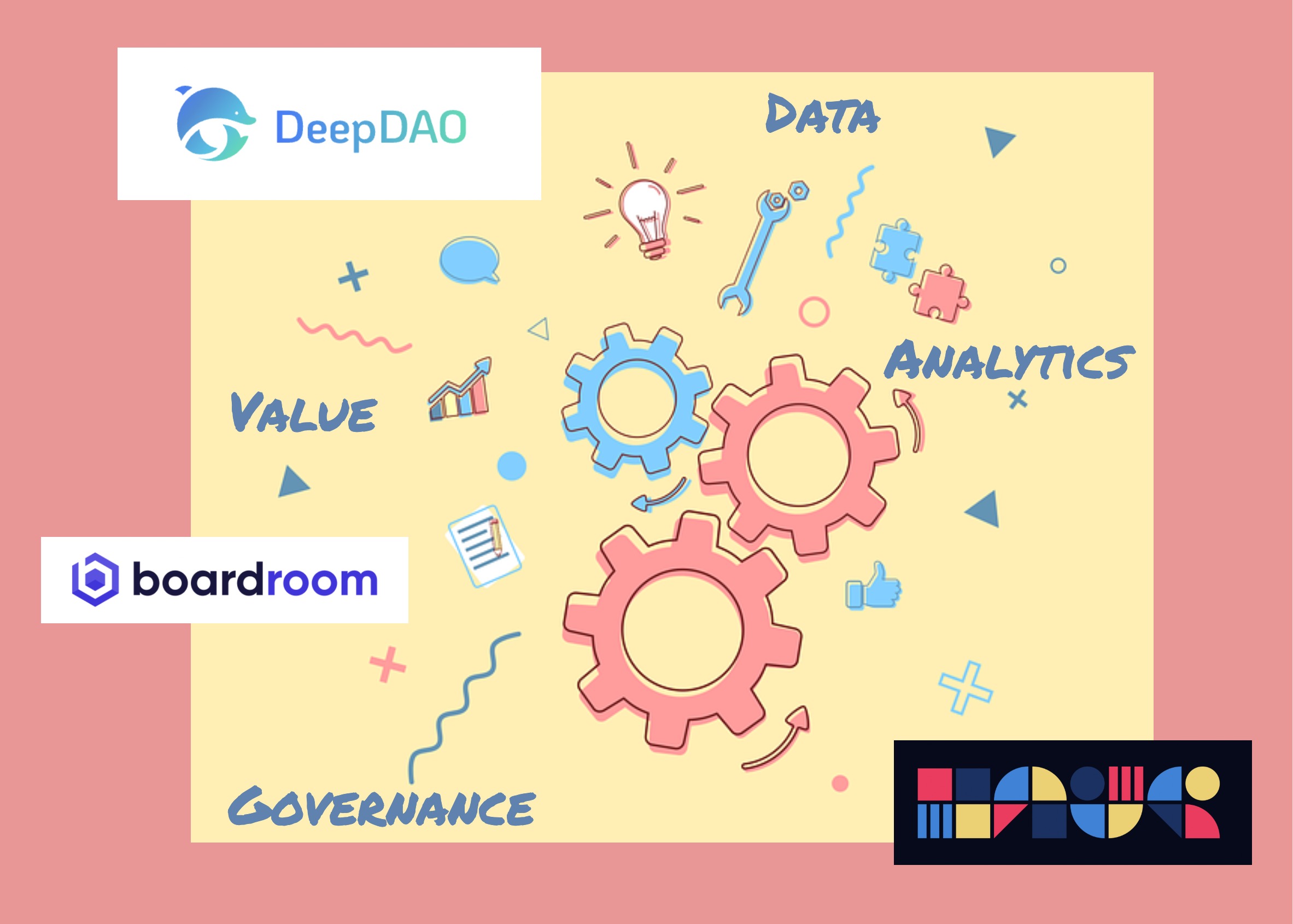
Key Components of a DAO
There are many things to consider when wanting to organize a DAO and some of the key components include:
- establish the type of DAO to form
- information sharing
- communication methods
- allow anyone to join or enforce a gated membership
- issue a tradable token or not
- tax responsibilities
- legal and liability considerations
- how to form a DAO.
I discussed the types of DAOs at the outset. Excellent tools for sharing content, proposals, and product information/code already exist and include:
- Medium
- Substack
- Mirror
- Commonwealth
- Notion
- Google Apps
- Gitbook
- Radicle
- Github.
Communication tools are also widely available and used actively for members to discuss important topics, proposals, projects, workstreams, team assignments, and key events. These tools include:
- Discord
- Telegram
- Commonwealth
- Discourse
- Rocket Chat.
I am going to discuss the other key components in the next two installments of this series.
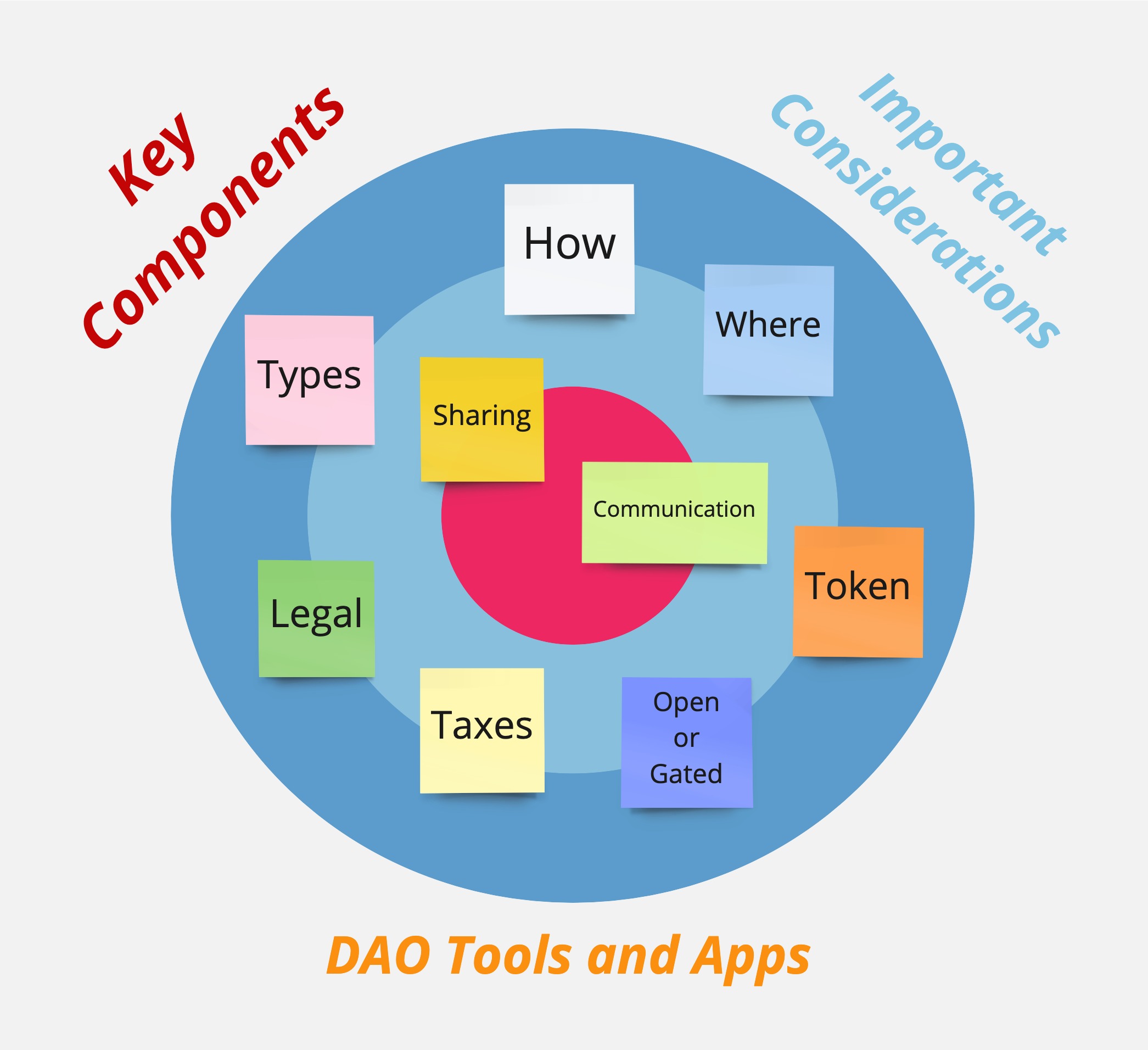
The Members
In many ways, the future success of the DAO is closely tied to ensuring that the members have a positive experience. Establishing working groups prior to inception or immediately after the genesis event of the DAO is extremely important. These core elements may include developing a:
- mission statement
- constitution
- roadmap
- governance framework
- treasury management system
- communications method
- procedure for onboarding new members
- procedure for offboarding existing members
- procedure for conflict resolution
- marketing plan
- structure for organizing meetings and events.
In my opinion, an effectively organized DAO supported by clear and concise documentation at the outset is essential to its future success. I think that active participation by the members should be encouraged and they should have a say in developing the core elements of the DAO. Many members will prefer a passive involvement and a productive and functional DAO will instill confidence for all types of participants.
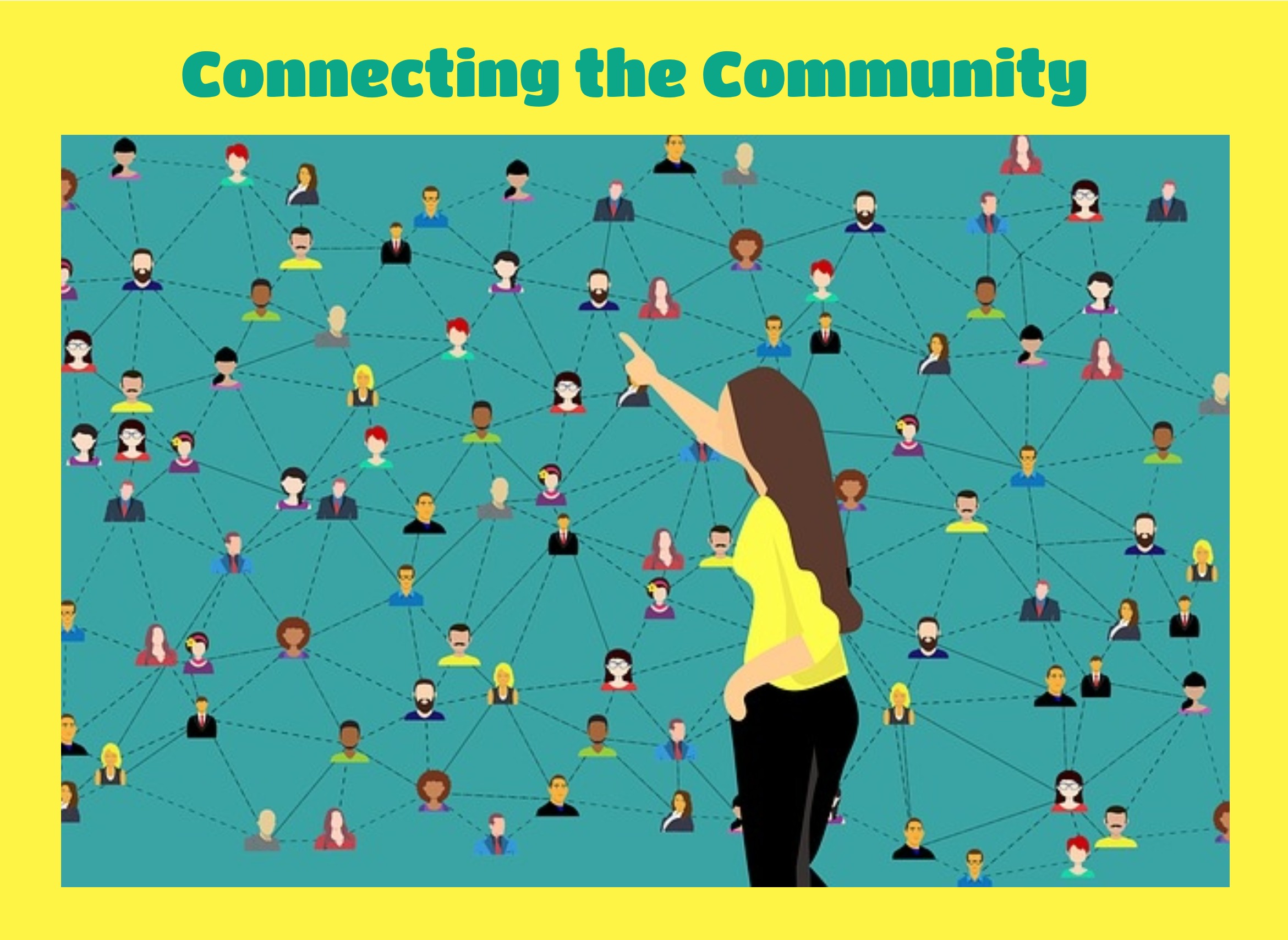
Let’s continue this exploratory journey into the innovative realm of DAOs in Part Two of the series.
Wordt vervolgd – Opa.
Sources, References, and Further Reading
DAOhaus YouTube video -
Deep DAO - https://deepdao.io/organizations
Boardroom - https://boardroom.io/
DAOhaus - https://app.daohaus.club/explore
Information Sharing Tools:
Medium - https://medium.com/
Substack - https://substack.com/
Mirror - https://mirror.xyz/
Notion - https://www.notion.so/
Google Apps - https://workspace.google.com/
Gitbook - https://www.gitbook.com/
Radicle - https://radicle.xyz/
Github - https://github.com/
Communication Tools:
Discord - https://discord.com/
Telegram - https://telegram.org/
Commonwealth - https://commonwealth.im/
Discourse - https://www.discourse.org/
Rocket Chat - https://rocket.chat/
You can find me here:
Twitter - @KaasKop_Opa
Medium - https://medium.com/@KaasKop_Opa
Loop - https://www.loop.markets/user/52879
Leo Finance - https://leofinance.io/@kaaskop
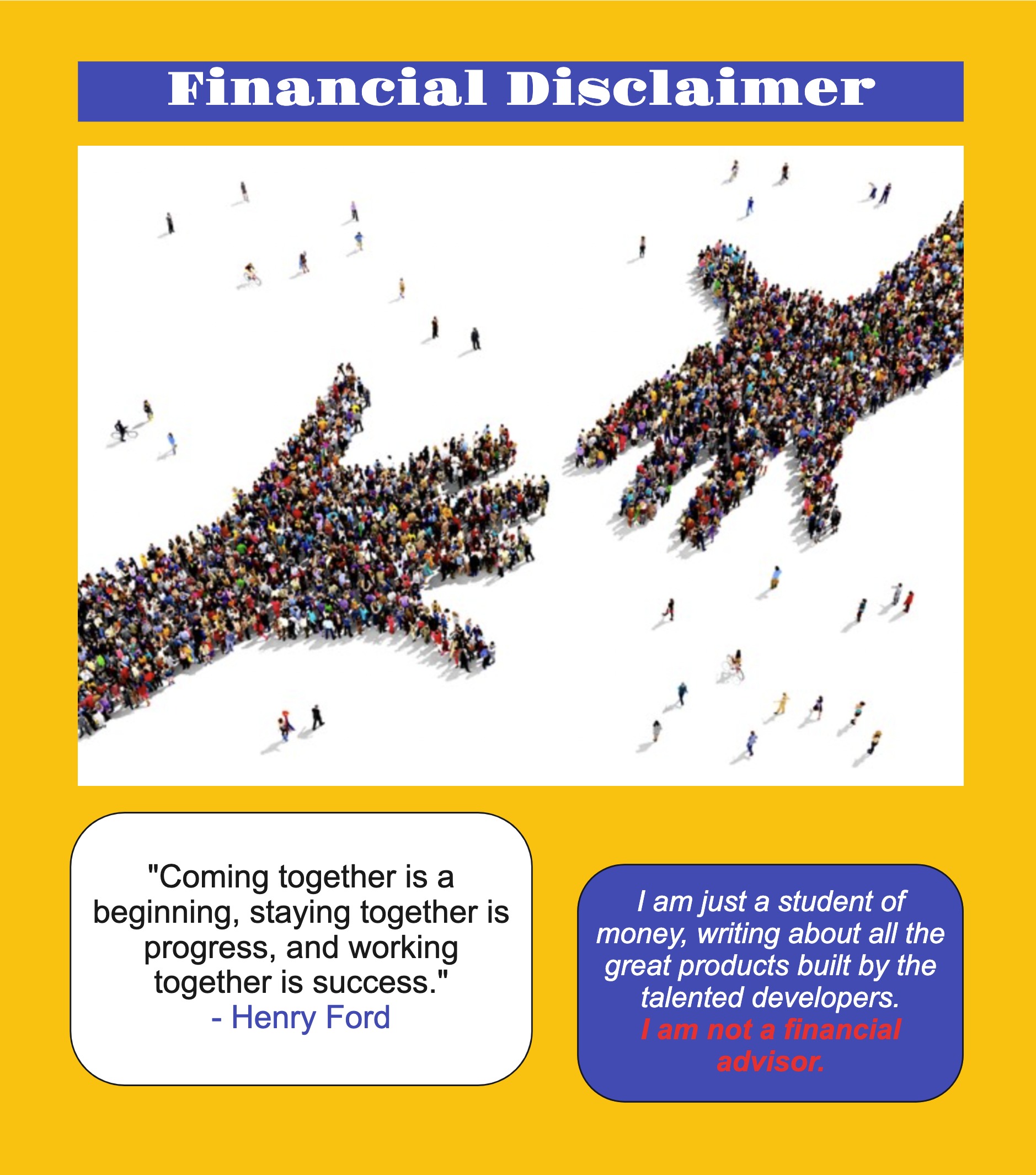
Posted Using LeoFinance Beta